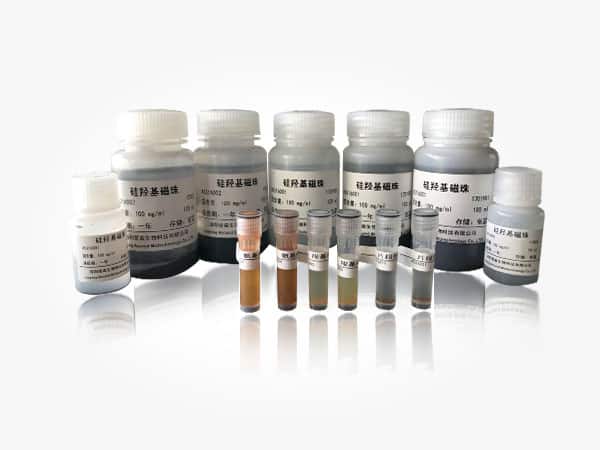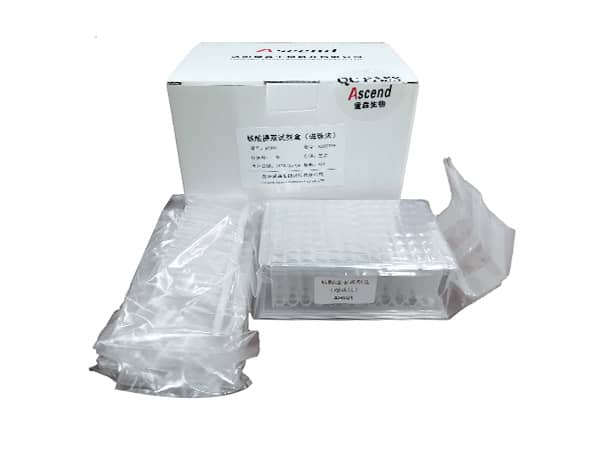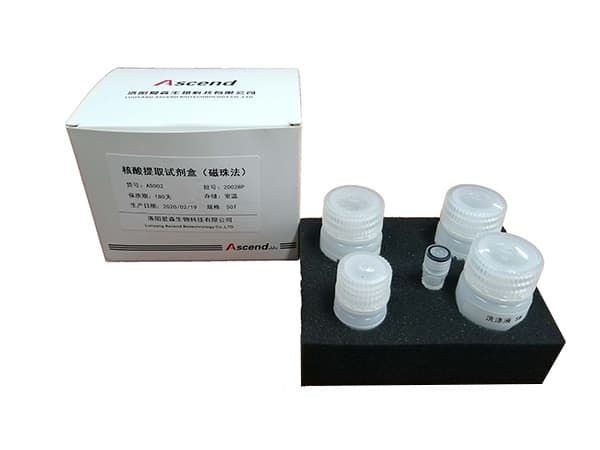What are the nucleic acid purification technologies?
At present, nucleic acid purification technologies widely used in scientific research can be divided into two categories: those that use media and those that do not use media. If media is used, nucleic acid is separated from all other impurities at one time; if media is not used, the first step is to separate the nucleic acid from all other impurities. Nucleic acid and salt are separated from macromolecular impurities, and nucleic acid is separated from salt by precipitation of nucleic acid.
1) Classical purification technology using phenol/chloroform extraction
After the cells are lysed, the aqueous phase containing nucleic acid is separated by centrifugation, and an equal volume of phenol: chloroform: isoamyl alcohol (25:24:1 volume) mixture is added. According to the application purpose, the two phases are vortexed and mixed (suitable for the separation of small molecular weight nucleic acids) or simply inverted and mixed (suitable for the separation of high molecular weight nucleic acids) and then centrifuged. Hydrophobic proteins are partitioned into the organic phase, and nucleic acids are retained in the upper aqueous phase.
Phenol is an organic solvent. It should be saturated with STE buffer beforehand. Unsaturated phenol will absorb the water phase and take away a part of nucleic acid. Phenol is also easy to oxidize and turn yellow, and oxidized phenol can cause the phosphodiester bond in the nucleic acid chain to break or crosslink the nucleic acid chain; therefore, a special substance should be added when preparing the phenol saturated solution to prevent phenol oxidation. Chloroform can remove fat and denature more protein, thereby improving extraction efficiency. Isoamyl alcohol can reduce bubbles generated during operation.
Nucleic acid salt can be precipitated by some organic solvents, nucleic acid can be concentrated by precipitation, the type of nucleic acid dissolution buffer can be changed and some impurity molecules can be removed. A typical example is precipitation with ethanol after phenol and chloroform extraction. After adding pH 5.0 to 5.5 in the aqueous phase containing nucleic acid, the final concentration of NaAc or KAc at a final concentration of 0.3M will neutralize the sodium ions on the nucleic acid phosphate backbone. The negative charge promotes the hydrophobic renaturation of nucleic acids in an acidic environment. Then add 2 to 2.5 times the volume of ethanol, after a certain period of incubation, the nucleic acid can be effectively precipitated. Some other organic solvents (isopropanol, polyethylene glycol (PEG), etc.) and salts (10.0mol/L ammonium acetate, 8.0mol/L lithium chloride, magnesium chloride and low-concentration zinc chloride, etc.) ) Is also used for the precipitation of nucleic acids.

2) Purification technology using ion exchange media
The lysate is passed through the column, and the nucleic acid is bound to the ion exchange medium; after washing to remove residual impurities, the nucleic acid is eluted from the medium with a high-salt buffer. After standard ethanol/isopropanol precipitation, ethanol washing, drying and other operations, the pure nucleic acid is obtained and dissolved in a suitable buffer.
3) Purification technology using adsorption media
The lysate is passed through the column, and the nucleic acid is selectively adsorbed by the adsorption medium; after washing to remove residual impurities, the nucleic acid is eluted from the medium with water or a suitable low-salt buffer, and it can be directly used in subsequent experiments.
4) Density gradient centrifugation
Density gradient centrifugation is also used for the separation and analysis of nucleic acids. Double-stranded DNA, single-stranded DNA, RNA and protein have different densities, so pure sample zones of different densities can be formed by density gradient centrifugation. This method is suitable for the preparation of a large number of nucleic acid samples, in which cesium chloride 2 ethyl bromide Spindle gradient equilibrium centrifugation is considered to be the preferred method for purification of large amounts of plasmid DNA. Cesium chloride is the standard medium for nucleic acid density gradient centrifugation. The ethidium bromide in the gradient solution combines with nucleic acid. The nucleic acid zone formed after centrifugation is irradiated by an ultraviolet lamp to produce fluorescence and be detected. Dialysis or ethanol precipitation removes cesium chloride to obtain purified nucleic acid.

Evaluation of purification methods
PC (P is the abbreviation of English phenol, C is the abbreviation of English chloroform) extraction/alcohol precipitation method is a method that will never be outdated. Stable, reliable, economical and convenient. PC extraction can completely remove proteins, and alcohol precipitation can remove salts. For ordinary clean samples (impurities are proteins), this method can completely obtain high-quality nucleic acids. Although each PC extraction will lose a part of the nucleic acid (because it is impossible to remove all of the water phase), and the low concentration of nucleic acid alcohol precipitation efficiency is low, but these problems can be solved by operating adjustments or reduce the impact.
The biggest problem of this method is that it is not suitable for large-scale extraction. PC extraction is a very effective means to remove protein. Phenol can denature the protein, and the denatured protein is separated from the water phase, in the phenol or between the phenol/water phase. The key to PC extraction is to mix thoroughly and to use enough. Thorough mixing can ensure sufficient contact between phenol and protein and completely denature the protein. Many people always worry about whether the violent mixing will cause damage to nucleic acids, especially genomic DNA. In fact, there is no need to be so careful.
Vigorous mixing operation will partially disrupt the genomic DNA of large molecules, but the damage will not be so strong that the DNA becomes a small fragment within 10kb. After shaking and mixing vigorously, most of the genomic DNA fragments will be larger than 20kb. This size, except for some special requirements, is completely suitable for PCR and restriction digestion. If the required fragments are very large, such as to construct a library, you cannot use a violent mixing method, but only gently inverted and mixed back and forth.

The key at this time is: the ratio of the lysis solution should be large enough to make the system not too viscous. The amount should be sufficient because phenol has a certain degree of saturation to remove protein. If the saturation is exceeded, the protein in the lysis system will not be removed at one time, and it must be extracted multiple times before it can be completely removed. In addition, the disadvantage of the system being too viscous is that the protein is difficult to completely remove, and the genomic DNA will be broken more severely, so pay attention to the ratio of the lysate to the sample. The 4C centrifugal operation is conducive to more thorough removal of protein. Another use of PC extraction is to use acidic phenol to partially remove DNA, and to obtain RNA with minimal DNA residue during RNA extraction. However, one thing to remind is that some plant samples cannot be extracted with PC before some impurities are removed, otherwise the nucleic acid will be degraded.
The high-salt precipitation protein/alcohol precipitation method is also a very good method. Compared with the PC extraction method, this method almost overcomes all the shortcomings of PC extraction, except that the purity stability may be lower. The benefit of faster and easier removal of protein is that it can be used for large-scale extraction, but the disadvantage is that the purity (protein residue) is not stable enough. The precipitation efficiency of protein is better at 4C.
The media purification method is a method that has received more and more attention. Its biggest feature is that it is very suitable for large-scale nucleic acid extraction, and because it is not affected by human factors, the stability of the purity is high. Its Achilles’ heel is the excessive amount of sample. The medium can be divided into two categories, one is column type, that is, the medium is pre-filled in the column below it; the other type is granular. The purification operation of the granular medium is not much different from the classic alcohol precipitation. It is through the process of adding liquid and pouring liquid several times. After drying, the purified nucleic acid can be obtained by dissolving it.
Although the operation of column purification also has the process of adding liquid and pouring liquid, because the added liquid will enter another centrifuge tube after centrifugation, and it is completely separated from the column containing nucleic acid, so the washing is more thorough and the operation is more labor-saving. However, the cost of the media purification method is the highest.



